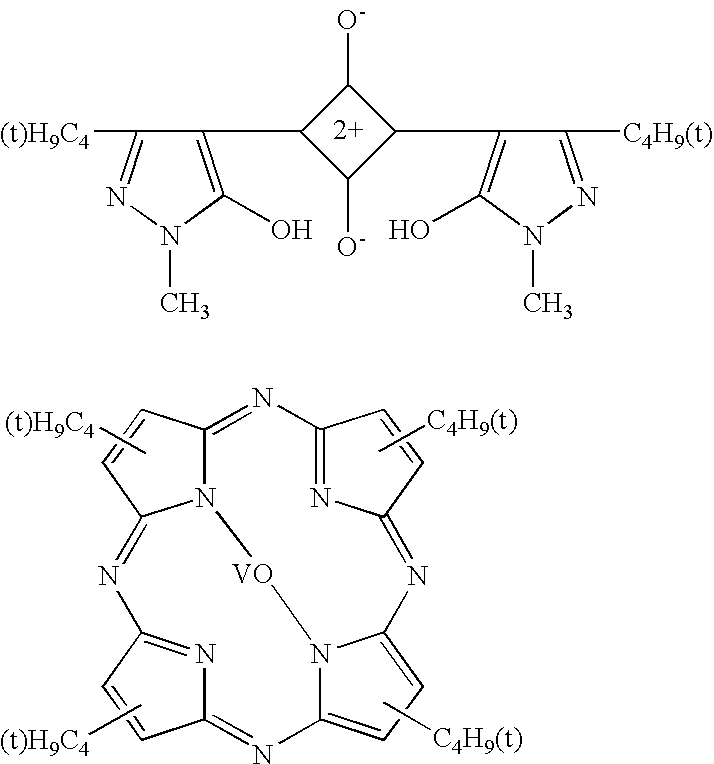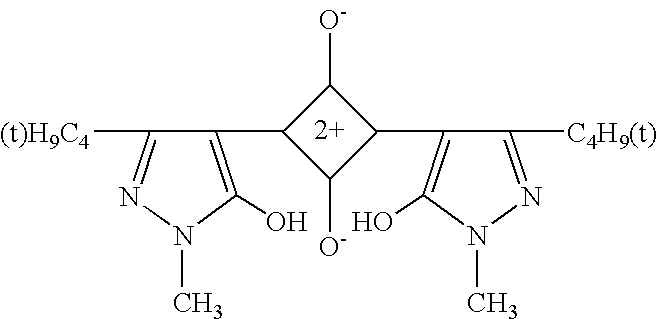Resin composition, optical filter and plasma display
- Summary
- Abstract
- Description
- Claims
- Application Information
AI Technical Summary
Benefits of technology
Problems solved by technology
Method used
Image
Examples
synthesis example 1
[0063]A 500-ml flask provided with a stirrer, a dropping orifice, a thermometer, a cooling pipe, and a nitrogen gas inlet port was charged with 30 g of ethyl acetate. Further, a dropping tank was charged with a monomer mixture consisting of 10 g of cyclohexyl methacrylate, 90 g of methyl methacrylate, and 0.5 g of tert-butyl-peroxy-2-ethylhexanoate. The flask, after admitting 20 wt. % of the mixture, was heated to a refluxing temperature. After the temperature elevation, the remaining 80 wt. % of the monomer mixture was continuously added dropwise to the flask over a period of two hours. After the two hours dropwise addition, 40 g of ethyl acetate was introduced. After the elapse of 8 hours from the start of the dropwise addition, the flask was cooled and 80 g of ethyl acetate was introduced to obtain a nonvolatile content of 40% solution and an acryl type resin having a weight average molecular weight of 185000 and an acid value and a hydroxyl group value both of 0 mgKOH / g (hereina...
synthesis examples 2 – 15
SYNTHESIS EXAMPLES 2–15
[0064]Acryl type resins were obtained by following the procedure of Synthesis Example 1 while preparing compositions shown in Tables 1 and 2 instead. These experiments will be referred to as Synthesis Examples 2–15.
example 1
[0065]A visible light absorbing resin composition was prepared by compounding 250 parts of the acryl type resin of Synthesis Example 1 as a binder resin, 0.1 g of a Dye A (tetraazaporphyrin type dye) represented by the following chemical formula, and 250 g of methylethyl ketone. This resin composition as a base material was applied to a PET film (made by Toyobo K.K. and sold under the product code of “A-4100”) having a thickness of 188 microns and having both surfaces treated to facilitate adhesion. The applied layer of the base material was dried at 100° C. for three minutes to form a coating film 10 μm in thickness. The film manufactured by the method described above was rated for stability at room temperature, humidity resistance and heat resistance. The composition and the results are shown in Tables 3 and 5.
[0066]
PUM
| Property | Measurement | Unit |
|---|---|---|
| Nanoscale particle size | aaaaa | aaaaa |
| Wavelength | aaaaa | aaaaa |
| Glass transition temperature | aaaaa | aaaaa |
Abstract
Description
Claims
Application Information
 Login to View More
Login to View More - R&D
- Intellectual Property
- Life Sciences
- Materials
- Tech Scout
- Unparalleled Data Quality
- Higher Quality Content
- 60% Fewer Hallucinations
Browse by: Latest US Patents, China's latest patents, Technical Efficacy Thesaurus, Application Domain, Technology Topic, Popular Technical Reports.
© 2025 PatSnap. All rights reserved.Legal|Privacy policy|Modern Slavery Act Transparency Statement|Sitemap|About US| Contact US: help@patsnap.com



